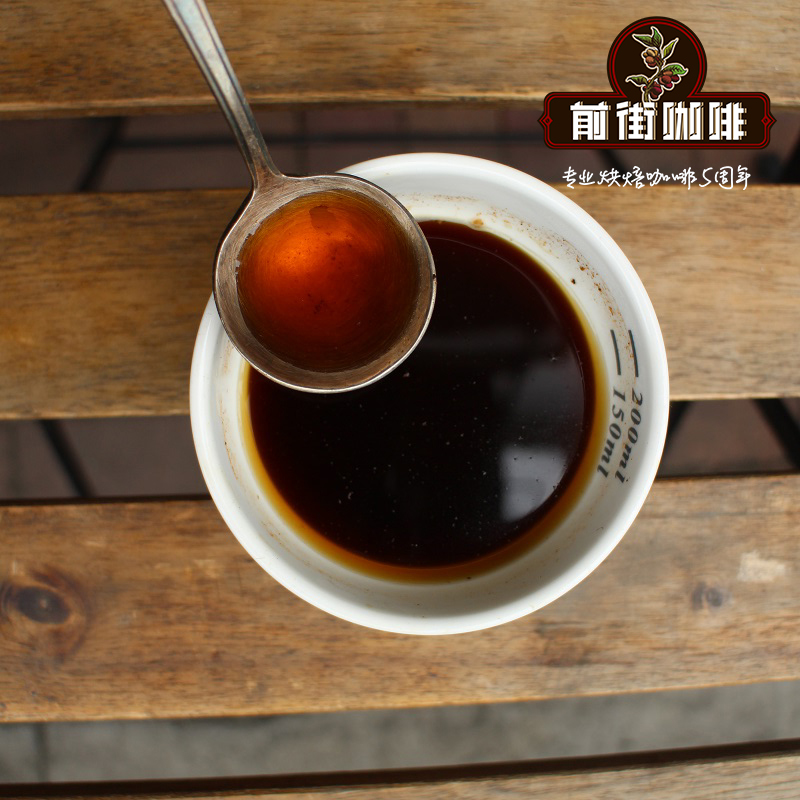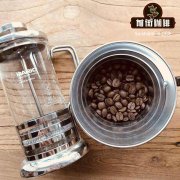How about traditional Italian coffee blends? Is it okay to mix coffee beans for hand brewing?

Professional coffee knowledge exchange more coffee bean information please follow the coffee workshop (Wechat official account cafe_style)
How about the traditional Italian coffee recipe? Is it all right to make espresso beans by hand?
Coffee blending refers to mixing two or more different varieties of coffee or the same variety of coffee but roasting different degrees of coffee in a certain proportion. Mixed coffee is by no means a simple addition, but hopes that through the unique understanding of coffee flavor, different coffee beans can learn from each other and blend with mixed coffee beans with excellent flavor.
Coffee blending is like a painter adjusting and creating charming colors in the palette, and the mixer can blend the attractive taste according to the different characteristics of the coffee beans. It is no exaggeration to say that matching is an art. As an artist, the assembler needs not only experience and inspiration, but also scientific calculation. The emergence of works of art will not be accidental, but the outbreak of long-term accumulation.
The purpose of coffee blending:
The purpose of coffee blending is as follows:
1 balanced taste
2 reduce the cost
3 unique flavor
4 stable flavor
Coffee blending scheme (for reference only):
1. Formula: 30% Guatemala SHB+30% Mexico AL+30% Brazil NO.2.+10% Kilimanjaro AA
Results: aroma 5, bitterness 5, sweetness 5, acidity 5.
2. Formula: 40% Sumatra Manning G1% Colombia SUP+20% Brazil NO.19+10% Kilimanjaro AA
Results: aroma 5, bitterness 10, sweetness 5, acidity 3.
3. Formula: 20% mocha + 20% Hawaiian Cona no.1+20% Brazil NO.2.+40% Kilimanjaro AA
Results: aroma 9, bitterness 10, sweetness 7, acidity 10
4. Formula: 40% Guatemala SHB+30% mocha + 30% Kilimanjaro AA
Results: aroma 10, bitterness 5, sweetness 6, acidity 7
5. Recipe: 50% Brazil NO.2.+30% Mexico AL+20% Jamaica Blue Mountain Coffee
Results: aroma 5, bitterness 3, sweetness 5, acidity 6.
6. Recipe: 30% Brazilian NO.2.+50% Colombia SUP+20% Java Robsta Coffee
Results: aroma 3, bitterness 8, sweetness 8, acidity 6.
What's the difference between coffee blending and individual coffee?
Single coffee refers to a single variety or a single co-producing area of coffee, such as Blue Mountain Coffee and so on.
There are some misunderstandings about the combination of coffee, it is considered that the blended coffee is only suitable for the extraction method of Italian machine, but not for the cooking method of single coffee, such as hand drip filter, pressure pot and so on.
Espresso is a 30 to 60 milliliter concentrate that is ground into powder and extracted with water at 9 atmospheric pressures of 92 degrees, followed by water or milk to make different kinds of coffee.
Well, when it comes to blending, the blending in espresso is different from that of a single product, which drinks the flavor of its origin, such as Yega snow coffee in Ethiopia and beans from Sidamo, which is famous for its rich fruit rhyme. High-quality acidity tastes like lemon, citrus and other fruits. The smell is similar to that of flowers. Indonesia's taste is mellow, the flavor tastes like traditional Chinese medicine soup, bark and vegetation, and the fresh soil taste after the rain is excellent. Colombia and other Chinese and American beans are mainly cocoa and chocolate, but they also include beans from bean-producing regions such as Brazil, which do not have much flavor and are very mediocre.
So if the espresso machine uses single beans to make coffee, it's called SOE coffee, espresso made from beans from a single producing area. Then if you bake normally, the baking degree of soe is slightly deeper than that of single bean. The concentrated liquid extracted in this way still retains a large part of the characteristics of the single product. For example, beans from Yega make soe American coffee, which tastes sweet and sour. Colombian beans with milk to make latte cabbage will also have a nutty flavor.
But if you use Yega's soe to make latte cabbage, it's not bad, it's just not suitable for milk coffee, it will make the milk have a sour feeling. (so a soe cafe must have more than two bean grinders to grind beans from American and milk coffee respectively.)
So, because of this, there is an Italian mix of beans. For example, with a batch of blends, I want rich nuts, cocoa and chocolate. Then first put 40% of Chinese and American beans such as Colombia. I want the coffee to be textured and full-bodied, so I choose 30% of the Robota beans from Vietnam. Finally, I want to make the aroma better, blending 30% of the beans from Yega. Make a cup to try, or fine-tune the proportion, or change the mixed beans, such a cup of espresso, add water or milk, can meet the requirements I want. This is the coffee mixed in most coffee shops.
And mixing coffee can magnify the advantages of some beans, cover up the defects of some beans, or achieve what the baker thinks he wants to present.
The only goal is to make this cup of coffee taste better and reach a higher audience.
Some shop owners are so proud that the best beans in Arabica are baked to achieve the desired results. Others will mix defective beans with Arabica beans to control costs. There are also some who bake cheap beans directly and deeply, and all kinds of commercial coffee beans are common.
Match, divide, spell and proficient. Raw spelling refers to mixing a variety of raw beans and then baking them in a bean baking machine to make ripe beans. Then cooked spelling is baked separately and then mixed.
Traditional Italian coffee beans are made up of a variety of coffee beans. in Italy, a bag of coffee beans can be made up of several or even dozens of coffee beans. Many people think that it is not easy to drink when they hear the blended coffee, and they think it is a mixture of coffee beans of unknown origin, but the truth is that the mixed beans can also be made entirely of fine coffee beans, or they can also be very good to drink.
The biggest advantage of using mixed coffee beans is to ensure the stability of the coffee taste. When the quality of a certain coffee bean changes, or the output decreases or the price increases, the baker can choose similar coffee beans instead without affecting the overall taste. Roasters need to determine the flavor of coffee to be presented, such as sour, sweet, bitter performance, and even the expectation of coffee Body, when choosing mixed beans and formulating blending formula. General coffee shops will mix their own "Signature Blend" (signature blended coffee), the flavor is absolutely as good as coffee beans from a single place of origin.
The formation of the trend of single origin:
SOE stands for single-origin espresso, although it is not necessarily equivalent to fine coffee, but if you select single-origin coffee beans with easy to identify flavor as SOE, you can produce a typical espresso with unique flavor. For example, Yega's typical citrus flavor, Kenyan fruit flavor, etc., coupled with espresso will magnify the taste of coffee, so specific flavors will be more prominent than hand brewing. However, although SOE is outstanding, its shortcomings are relatively easy to be magnified because it comes from a single place of origin, so factors such as roasting and particle size will affect the flavor, so it is not necessarily better to drink than coffee.
Look for the SOE you love:
Speaking of the rise of this trend, Chen Zhihuang, founder of Fika Fika Cafe, who won the Nordic Cup Coffee roasting Competition in 2013, believes that coffee is similar to whisky. From the beginning, people only knew the brand and tasted blended whisky, but it was not until nearly a decade that single malt whisky from different regions became popular, and SOE is the same concept.
If you want to find espresso that suits your taste, don't rely solely on single origin or blended coffee. Next time, ask the clerk about the flavor and roasting degree of espresso beans. Keep trying to find your favorite taste. In what proportion do you spell it? Do you know it well or work hard?
Qianjie recommended cooking: how to mix beans by hand?
The three coffee beans use different roasting degrees, but the difference is small, and the extraction will not be affected.
I did several matching tests on the three coffee beans according to different proportions, and the score of the matching beans in the cup test exceeded that of the other three individual cooked beans before determining the proportion: 5:3:2. That is, Arida as the main bean, accounting for 50%, this proportion makes its sense of fermentation is not so prominent, so that the wine will not overshadow the good flavor of the fruit.
Cochell accounts for 30%, and its bright acidity is combined with Arida's sweetness, making the acidity of the whole cup of coffee softer and the faint scent of flowers looming.
Genesis accounts for 20%. The aroma of caramel and citrus makes the whole cup of coffee more layered and has a longer finish, leaving fragrance on the lips and teeth after swallowing.
Compared with Italian matching, hand matching is relatively easy, because Italian coffee machine can magnify both advantages and disadvantages. First cup by cup test, understand the characteristics of each coffee, think about their respective advantages and disadvantages, and then mix it, which is more troublesome than blindly mixing the cup, but it is an indispensable step for the final product.
Using the combination of multiple varieties, the baking degree should be close to the baking degree, which is beneficial to the determination of flavor trend and the stability of extraction.
A single variety can also be used for blending, and multiple baking degrees are used to improve the disadvantage of single flavor. For example, Xiaobian once used golden mantenin to bake medium and deep baking: medium baking: deep baking-6:3:1 spelled out both acidity and sweetness. Mantenin hand-flushing with layered flavor.
Blending and choosing coffee with complementary effect can have the effect of 1: 1 > 2, but pay attention to the proportion or you will lose balance. The common "Blue Mountain flavor" is made with Brazil + Colombia + Mantenin. The sour, bitter and sweet of these three types of coffee complement and enhance each other, and the right proportion can spell out the balance and mellow thickness of the Blue Mountain.
Filter cup: Hario V60
Water temperature: 88 degrees
Degree of grinding: small Fuji degree of grinding 4
Cooking methods: the ratio of water to powder is 1:15, 15g powder, the first injection of 25g water, 25 s steaming, the second injection to 120g water cut off, waiting for the powder bed water to half and then water injection, slow water injection until 225g water, extraction time about 2:00
Analysis: using three-stage brewing to clarify the flavor of the front, middle and back of the coffee. Because the V60 has many ribs and the drainage speed is fast, it can prolong the extraction time when the water is cut off.
Important Notice :
前街咖啡 FrontStreet Coffee has moved to new addredd:
FrontStreet Coffee Address: 315,Donghua East Road,GuangZhou
Tel:020 38364473
- Prev

What are blended coffee beans? What is the proportion of Italian coffee beans? Which kind of beans should be used to mix coffee beans?
Professional coffee knowledge exchange more coffee bean information please follow the coffee workshop (Wechat official account cafe_style) what is the blending of coffee beans? What is the blending ratio of Italian coffee beans? What kind of beans should I use to mix coffee beans? Since it is a blending, it naturally refers to the blending of more than two kinds of raw beans, but a special example is that the same kind of coffee beans with different roasting degrees can also be blended.
- Next

What are blended coffee beans? Can Italian beans be made by hand? Italian coffee beans can be made by themselves.
Professional coffee knowledge exchange more coffee bean information please follow the coffee workshop (Wechat official account cafe_style) what is the blending of coffee beans? Can Italian beans be made by hand? Can I make my own espresso beans? Blending: due to the different nature of individual coffee beans and people's tastes, most coffee shops will not simply use a single variety.
Related
- Detailed explanation of Jadeite planting Land in Panamanian Jadeite Manor introduction to the grading system of Jadeite competitive bidding, Red bid, Green bid and Rose Summer
- Story of Coffee planting in Brenka region of Costa Rica Stonehenge Manor anaerobic heavy honey treatment of flavor mouth
- What's on the barrel of Blue Mountain Coffee beans?
- Can American coffee also pull flowers? How to use hot American style to pull out a good-looking pattern?
- Can you make a cold extract with coffee beans? What is the right proportion for cold-extracted coffee formula?
- Indonesian PWN Gold Mandrine Coffee Origin Features Flavor How to Chong? Mandolin coffee is American.
- A brief introduction to the flavor characteristics of Brazilian yellow bourbon coffee beans
- What is the effect of different water quality on the flavor of cold-extracted coffee? What kind of water is best for brewing coffee?
- Why do you think of Rose Summer whenever you mention Panamanian coffee?
- Introduction to the characteristics of authentic blue mountain coffee bean producing areas? What is the CIB Coffee Authority in Jamaica?

